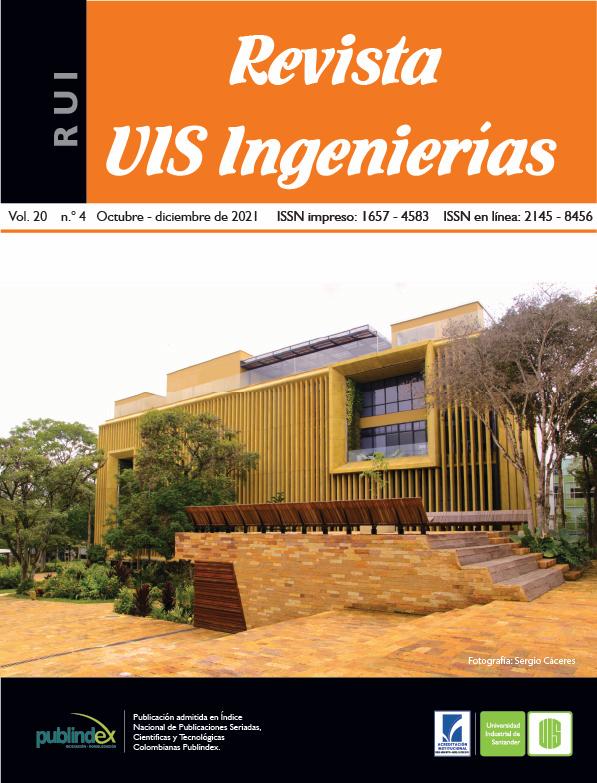Publicado 2021-07-07
Palabras clave
- presión sanguínea,
- Electrocardiograma,
- monitor móvil,
- Fotopletismografia,
- PTT
Cómo citar
Resumen
El objetivo de esta investigación consiste en identificar aquellos parámetros provenientes de las señales del electrocardiograma ECG y fotopletismograma PPG que permitan hacer una evaluación de la presión sanguínea utilizando un dispositivo móvil. El método propuesto incluye innovaciones en el procesamiento y análisis de las señales. Con el objetivo de aumentar la precisión de la medición de la presión sanguínea, en este trabajo, se propone la utilización de parámetros provenientes de la señal del PPG en conjunto con el PTT obtenido de las señales del ECG y PPG analizadas en conjunto. Adicionalmente, se propone el diseño e implementación de una red neural para determinar la relación existente entre la presión sanguínea estimada por el método y la de referencia, lo cual permite evaluar la viabilidad del método propuesto.
Descargas
Referencias
[2] M. Elgendi, “On the Analysis of Fingertip Photoplethysmogram Signals,” Current Cardiology Reviews, vol. 8, no. 1, pp. 14-25, 2012, doi: 10.2174/157340312801215782.
[3] M. Singla, S. Azeemuddin, P. Sistla, “Learning-Based Model for Central Blood Pressure Estimation using Feature Extracted from ECG and PPG signals,” in 42a In 2020 42nd Annual International Conference of the IEEE Engineering in Medicine & Biology Society (EMBC), 2020, pp. 855-858, doi: 10.1109/EMBC44109.2020.9176593.
[4] “CardioQVARK, Control of the cardiovascular system,” 2020. [Online]. Available: https://cardioqvark.ru
[5] S. Rezk, C. Join, S. El Asmi, “An algebraic derivative-based method for R wave detection,” in 19th European Signal Processing Conference, 2011, pp. 1578-1582.
[6] J. Hart, “Normal resting pulse rate ranges,” Journal of Nursing Education and Practice. vol. 5, no. 8, pp. 95-98, 2015, doi: 10.5430/jnep.v5n8p95.
[7] M. Unser, A. Aldroubi, “A review of wavelets in biomedical applications,” Proceedings of the IEEE, vol. 84, no. 4, pp. 626-638, 1996, doi: https://doi.org/10.1109/5.488704.
[8] M. Singla, P. Sistla, S. Azeemuddin, “Cuff-less Blood Pressure Measurement Using Supplementary ECG and PPG Features Extracted Through Wavelet Transformation,” in 41st Annual International Conference of the IEEE Engineering in Medicine and Biology Society (EMBC), 2019, pp. 4628-4631, doi: 10.1109/EMBC.2019.8857709.
[9] X. He, RA Goubran, XP Liu, “Secondary Peak Detection of PPG Signal for Continuous Cuffless Arterial Blood Pressure Measurement,” IEEE Transactions on Instrumentation and Measurement, vol. 63, no. 6, pp. 1431-1439, 2014, doi: 10.1109/TIM.2014.2299524.
[10] S. Datta, R. Banerjee, AD Choudhury, A. Sinha, A. Pal, “Blood pressure estimation from photoplethysmogram using latent parameters,” in IEEE International Conference on Communications (ICC), 2016, pp. 1-7, doi: 10.1109/ICC.2016.7511599.
[11] P. Shi, S. Hu, Y. Zhu, J. Zheng, Y. Qiu, P. Cheang, “Insight into the dicrotic notch in photoplethysmographic pulses from the fingertip of young adults,” Journal of medical engineering & technology, vol. 33, no. 8, pp. 628-633, 2009, doi: 10.3109/03091900903150980.
[12] A. N. Kalinichenko, “Algorithmic support of ECG analysis of the system of remote cardiological monitoring,” in Proceeding of the 20th conference of fruct association, 2018, pp. 112-117.
[13] M. Chaykovskaya, A. Kalinichenko, E. Fetisova, S. Mironovich, A. Kiprensky, “Artificial Rhythm Recognition Using Portable Cardiomonitor and Mobile Application,” in Proceeding of the 43th Confidence Computing in Cardiology, Vancouver, 2016, pp. 97-100.
[14] A. N. Kalinichenko, M. K. Chaykovskaya, D. A. Danilova, “Paced ECG Analysis in Mobile Cardiac Monitor,” in Proceedings of the 43rd Conference Computing in Cardiology, Vancouver, 2016, pp. 649-652.
[15] О. В. Сенько and Oleg Sen’ko, “Non-Invasive Arterial Pressure Estimating With the Cardiac Monitor CardioQvark,” Matematicheskaya Biologiya i Bioinformatika, vol. 12, no 2, pp. 536-545, 2017, doi: 10.17537/2017.12.536.
[16] M. Y. Man Wong, C. C. Yan Poon, and Y. Y. Ting Zhang, “An Evaluation of the Cuffless Blood Pressure Estimation Based on Pulse Transit Time Technique: a Half Year Study on Normotensive Subjects,” Cardiovascular Engineering, vol. 9, no. 1, pp. 32-38, 2009, doi: 10.1007/s10558-009-9070-7.
[17] X. He, R. A. Goubran, X. P. Liu, “Secondary Peak Detection of PPG Signal for Continuous Cuffless Arterial Blood Pressure Measurement,” IEEE Transactions on Instrumentation and Measurement, vol. 63, no. 6, pp. 1431-1439, 2014, doi: 10.1109/TIM.2014.2299524.
[18] X. R. Ding, Y. T. Zhang, J. Liu, W. X. Dai, H. K. Tsang, “Continuous Cuffless Blood Pressure Estimation Using Pulse Transit Time and Photoplethysmogram Intensity Ratio,” IEEE Trans. Biomed. Eng., vol. 63, no. 5, pp. 964-972, 2016, doi: 10.1109/TBME.2015.2480679
[19] A. I. Khuri, “Introduction to Linear Regression Analysis,” International Statistical Review, vol. 81, no. 2, pp. 318-319, 2013, doi: 10.1111/insr.12020_10.
[20] M. T. Hagan, H. B. Demuth, M. H. Beale, Neural Network Design. Boston, MA, USA: PWS Publishing, 1996.


